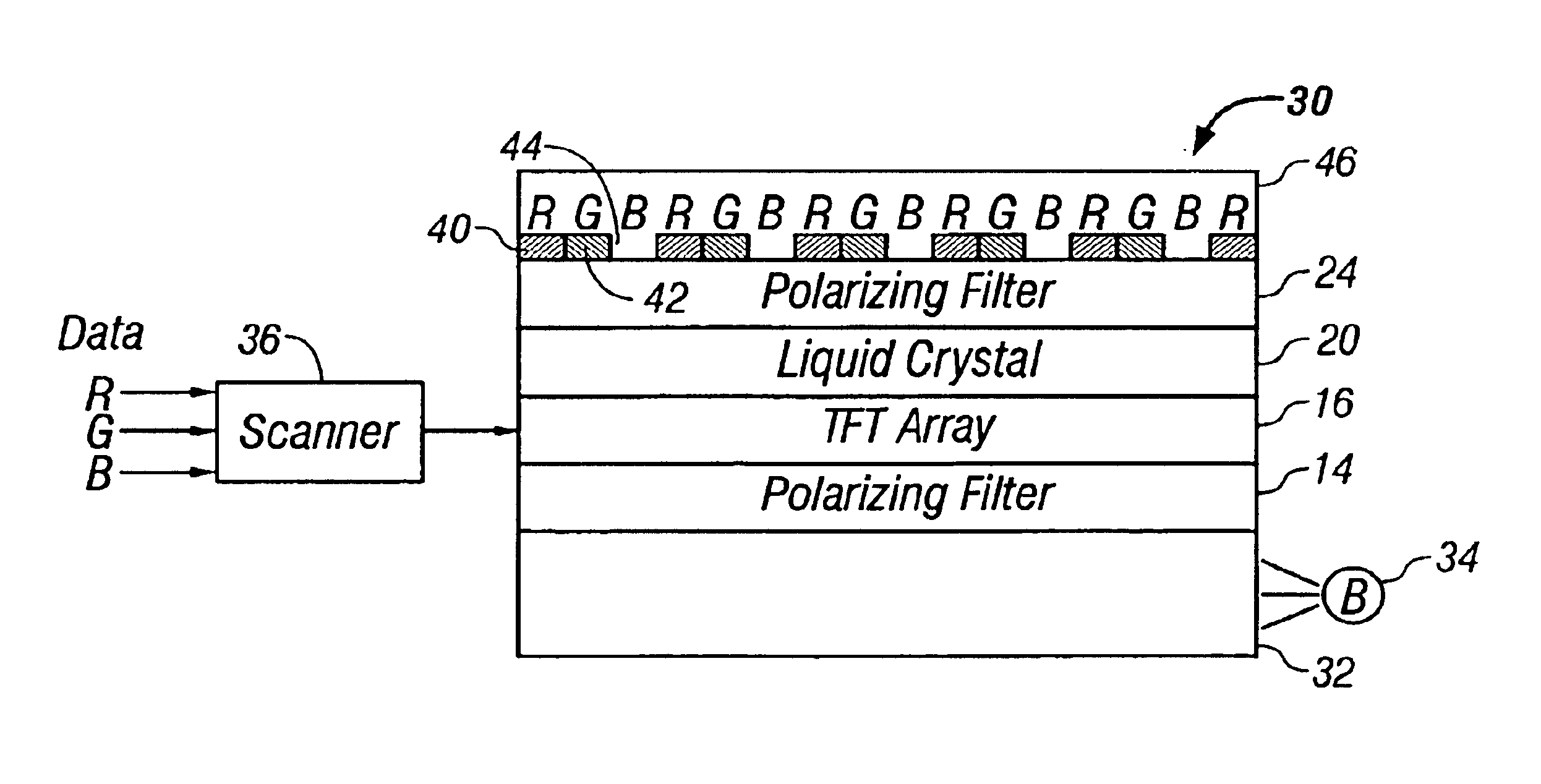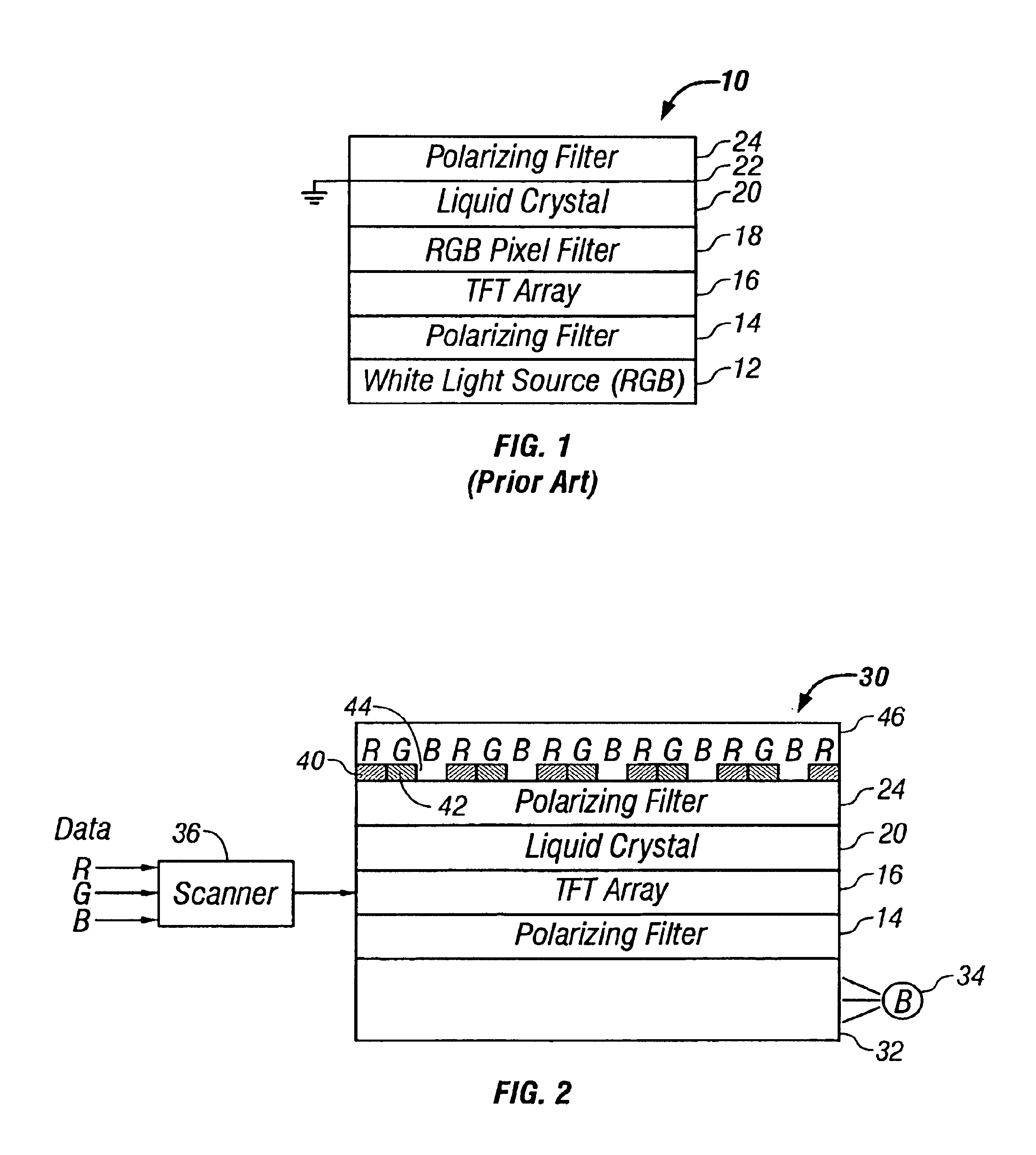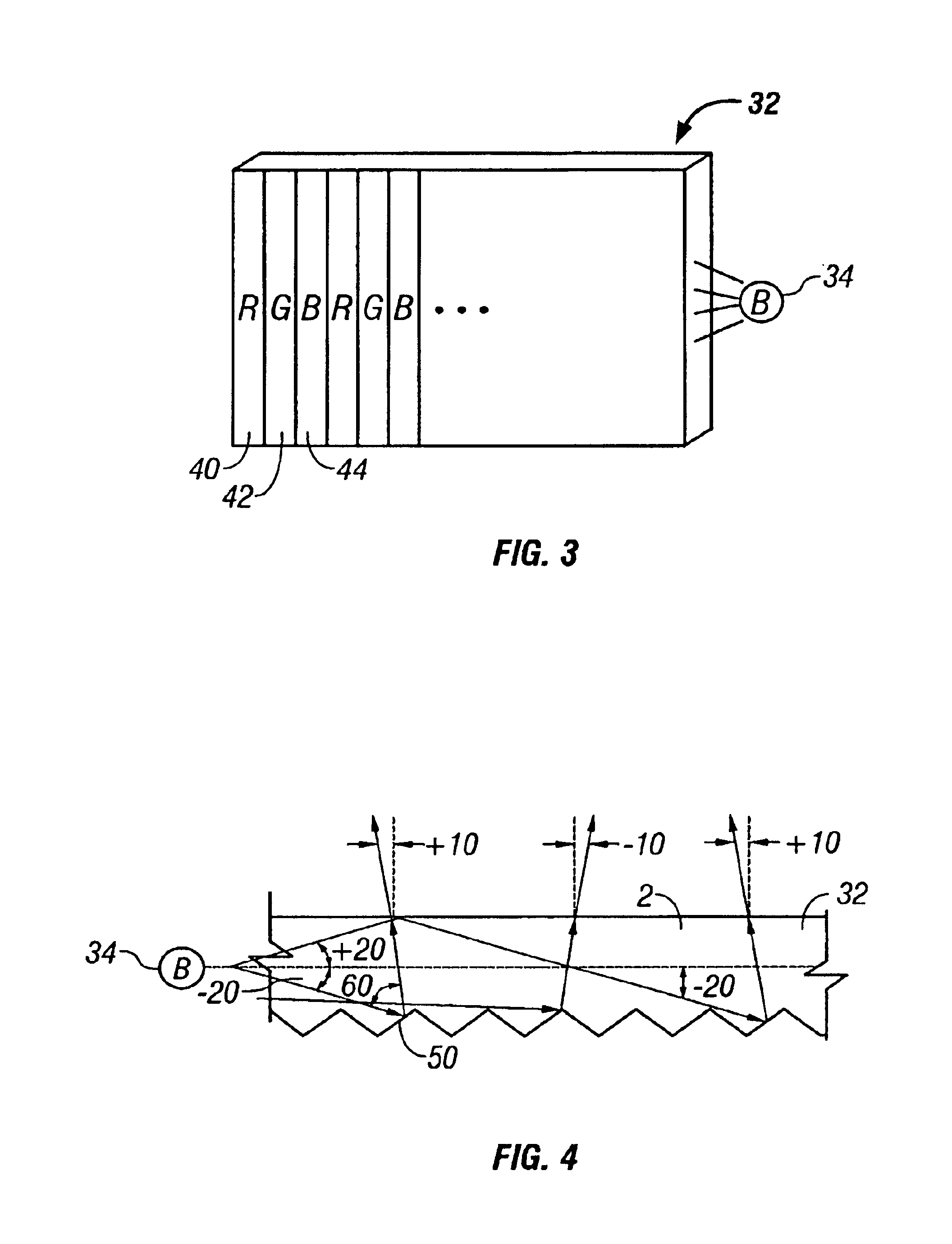Blue backlight and phosphor layer for a color LCD
a color liquid crystal display and backlighting technology, applied in the field of color liquid crystal display backlighting, can solve the problems of limited brightness, limited viewing angle, low efficiency, etc., and achieve the effect of wide viewing angl
- Summary
- Abstract
- Description
- Claims
- Application Information
AI Technical Summary
Problems solved by technology
Method used
Image
Examples
Embodiment Construction
FIG. 2 is a cross-section of a portion of an LCD 30 in accordance with one embodiment of the invention. Other embodiments may include additional, well known features such as wavelength-dependent phase retarders and diffusers to increase the viewing angle.
The LCD includes a light guide 32, which may be conventional. A blue light LED 34 is optically coupled to an edge of the light guide 32, and deformities are formed in or on a surface of the light guide 32 to leak out the blue light through the upper surface of the light guide 32. The light guide may also be a diffuser with the blue light source located behind the diffuser. Lenses may be formed on the top surface of the light guide 32 to collimate the light output from the light guide 32. Numerous types of well known light guides or defusers may be used to output the blue light. Preferably, the blue light output is non-Lambertian, forward collimated. In one embodiment, the blue light LED 34 outputs blue light with a wavelength of 460...
PUM
| Property | Measurement | Unit |
|---|---|---|
| wavelength | aaaaa | aaaaa |
| quantum efficiency | aaaaa | aaaaa |
| decay time | aaaaa | aaaaa |
Abstract
Description
Claims
Application Information
 Login to View More
Login to View More - R&D
- Intellectual Property
- Life Sciences
- Materials
- Tech Scout
- Unparalleled Data Quality
- Higher Quality Content
- 60% Fewer Hallucinations
Browse by: Latest US Patents, China's latest patents, Technical Efficacy Thesaurus, Application Domain, Technology Topic, Popular Technical Reports.
© 2025 PatSnap. All rights reserved.Legal|Privacy policy|Modern Slavery Act Transparency Statement|Sitemap|About US| Contact US: help@patsnap.com



